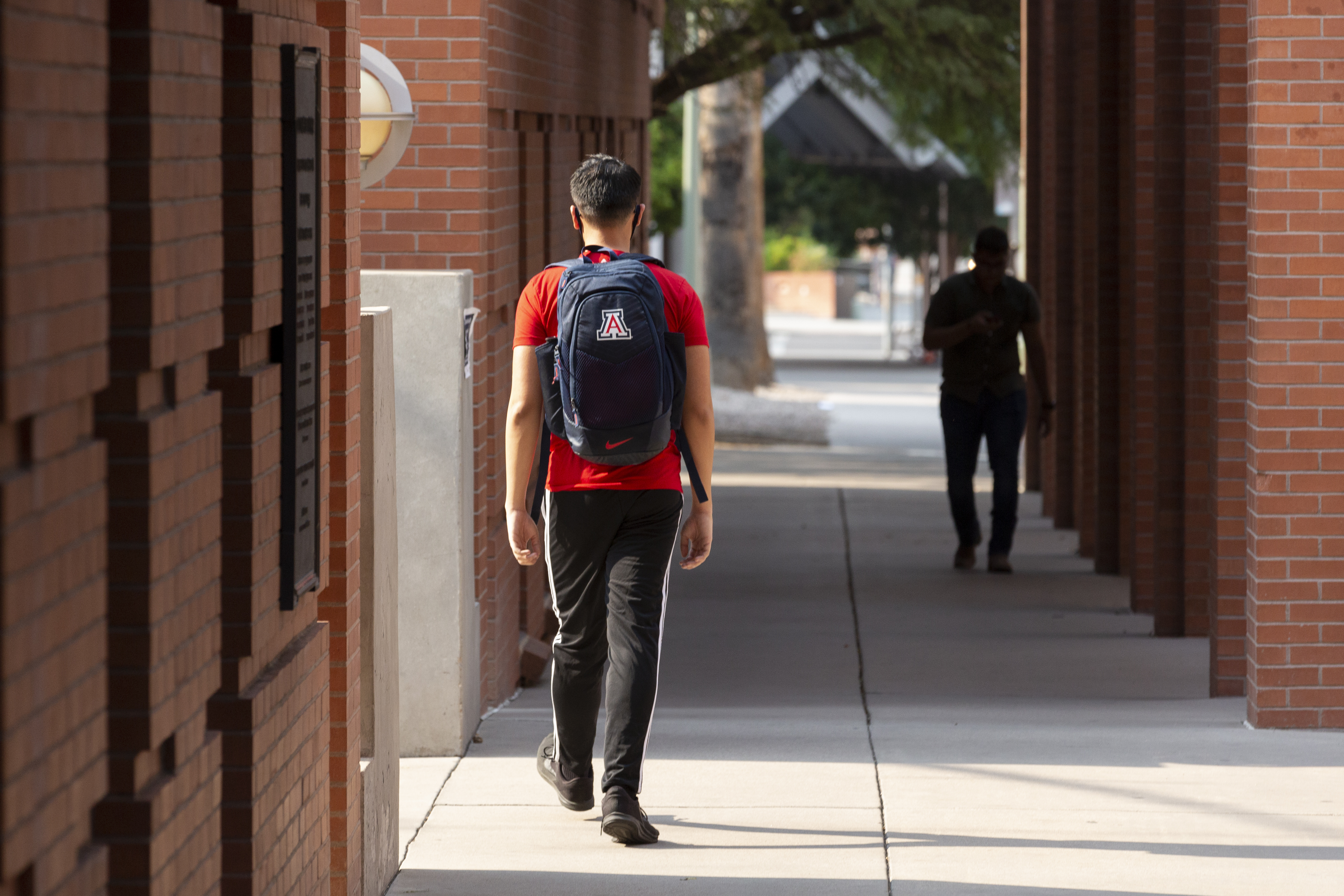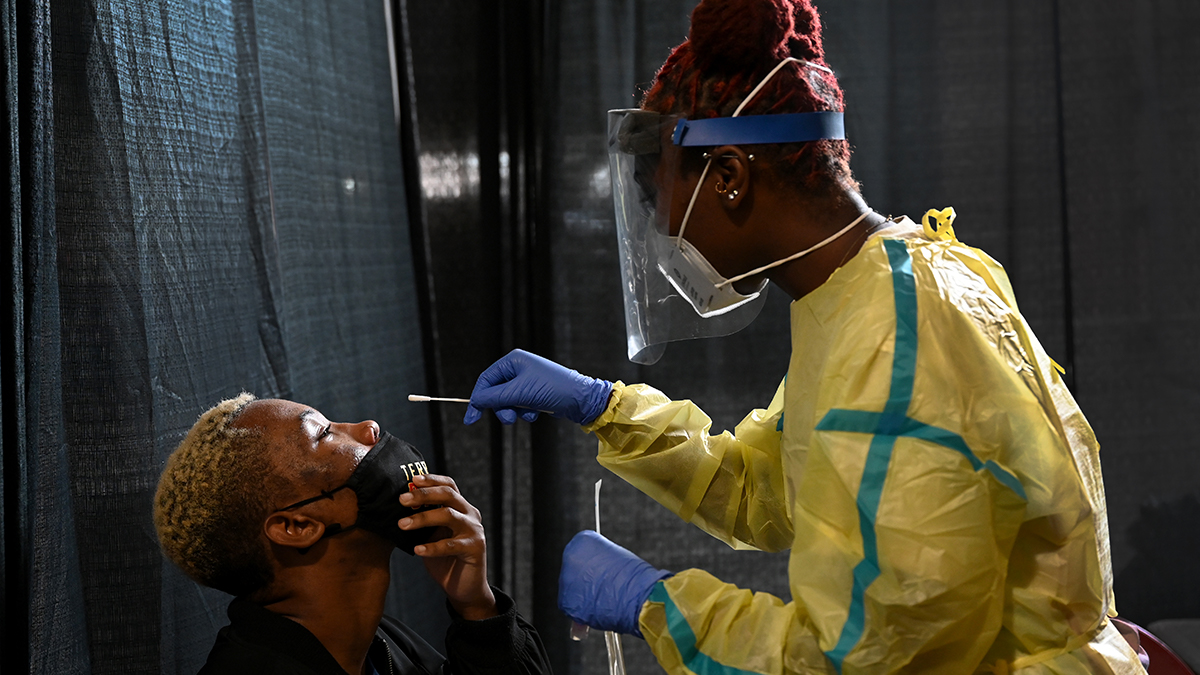Phase three reopening begins in Maryland at 5 p.m. Friday, bringing with it a return to some degree of normalcy just in time for Labor Day weekend.
For the first time since quarantine began, Marylanders will be able to go to the movies or attend an outdoor music concert. All businesses will be able to open, albeit with limited capacity depending on the type of venue.
Yet, as the state begins to open up, the data points to an increase in new COVID-19 cases, a worrisome trend that has led certain counties to delay entry into phase three.
Anne Arundel, Montgomery and Prince George's Counties chose to remain in phase two, citing the continued struggle with coronavirus in their regions.
In D.C., new research from Children’s National Hospital shows both the coronavirus and coronavirus antibodies can appear simultaneously in young patients. This means that children could be contagious even if antibodies are detected and they have no COVID-19 symptoms.
With this research in mind, the role children play in the spread of coronavirus could be underestimated. It's particularly important to note now as some students start their fall semester in-person.
We're making it easier for you to find stories that matter with our new newsletter — The 4Front. Sign up here and get news that is important for you to your inbox.
What the Data Shows
Maryland reported 819 new COVID-19 cases Friday, the largest single-day increase in nearly a month, a concerning surge as the state moves into phase three.
The seven-day average of new cases is also trending upward, with Maryland now reporting an average of 595 daily cases, up from 538 just last week.
Nearly 400 people are currently hospitalized for COVID-19 in Maryland, safely below the state's hospital capacity.
Maryland's positivity rate is at 3.48%, up slightly from Thursday.
Greater Northern Virginia remains stable while coronavirus cases continue their week-long rise elsewhere in the state. The seven-day average for cases in Virginia, excluding Greater NoVa, has increased from 659 to 742 over the past week.
In D.C., the seven-day average of new cases has fallen slightly, down 7 cases from last week.
D.C. continues to maintain good coronavirus metrics, although only 7.5% of new COVID-19 cases are coming from quarantined individuals, far below the city's goal of 60%.
New cases in Virginia are also increasing. Virginia is now averaging 973 new cases daily, compared to 896 a week prior.
Virginia's positivity rate is still high. Out of all Virginians tested, 7.8% are coming back with positive test results.
The map below shows the number of coronavirus cases diagnosed per 1,000 residents.
Coronavirus Cases in DC, Maryland and Virginia
COVID-19 cases by population in D.C. and by county in Maryland and Virginia
Source: DC, MD and VA Health Departments
Credit: Anisa Holmes / NBC Washington
Local Coronavirus Headlines
- Public tours of the White House, halted nearly six months ago due to the coronavirus outbreak, are set to resume later this month with new health and safety policies in place. Read more.
- People collecting unemployment insurance in the D.C. region soon will begin seeing that extra $300 President Donald Trump promised — some sooner than others. Read more.
- D.C. Public Schools are seeing a 70% drop in vaccinations among students. Here's more information.
- James Madison University will move primarily to online learning after hundreds of students were diagnosed with COVID-19 less than two weeks after students returned to campus. Read more.
- Dozens of inmates at a West Virginia prison have tested positive for the coronavirus, health officials said. Read more.
- Ocean City is postponing plans to re-deck its iconic boardwalk because of a lumber shortage caused by the coronavirus outbreak. Read more.
- Arlington County police have begun enforcing social distancing in the nightlife area of Clarendon. Read more.
Reopening Tracker
- Maryland Gov. Larry Hogan announced Tuesday that all businesses can reopen when phase three begins on Friday, including movie theaters and concert venues. Go here to see what individual counties plan to do.
- Maryland Gov. Larry Hogan said last Thursday that he has authorized all public schools in the state to begin “safely” reopening because state metrics on the coronavirus show improvements. The state “strongly suggests” that local school districts bring students back into schools but cannot force them to do so, Hogan said. Montgomery and Prince George's schools have both affirmed that they are not altering plans to host classes online throughout the first half of the school year.
- Private and parochial schools in Maryland can choose when to reopen after a back-and-forth between county health officials and the governor. Read more.
- Prince George's County revisited its phase two reopening executive order due to an uptick in coronavirus cases, according to the county executive's office.
- Virginia entered phase three reopening on July 1, loosening restrictions on restaurants, stores, gyms and pools. Northam has said more restrictions could be implemented if cases continue to grow.
- Prince George's County entered full phase two on June 23, allowing the MGM Casino and gyms to reopen.
- D.C. entered phase two on June 22, allowing indoor dining, gyms, libraries and houses of worship to reopen with restrictions.
- Montgomery County entered phase two on June 19, reopening with restrictions gyms, houses of worship, indoor dining and retail.
- Maryland entered phase two of reopening on June 10, permitting indoor dining, outdoor pools and outside amusements to reopen.
How to Stay Safe
There are ways to lower your risk of catching coronavirus. Here are guidelines from the CDC:
- Wear a snug-fitting mask that covers your nose and mouth.
- Avoid being indoors with people who are not members of your household. The more people you are in contact with, the more likely you are to be exposed to COVID-19. If you are indoors with people you don’t live with, stay at least six feet apart and keep your mask on.
- Wash your hands often, especially after you have been in a public place.
Sophia Barnes, Andrea Swalec and Anisa Holmes contributed to this report
Coronavirus Deaths in Your City and State — and Across the US
These charts use daily coronavirus death data from Johns Hopkins University to show the seven-day moving average of deaths at the city, state and country level.
The impact of coronavirus varies enormously in the United States from one place to another.
Source: Johns Hopkins University.
Credit: Visuals by Amy O’Kruk/NBC, data analysis by Ron Campbell/NBC





